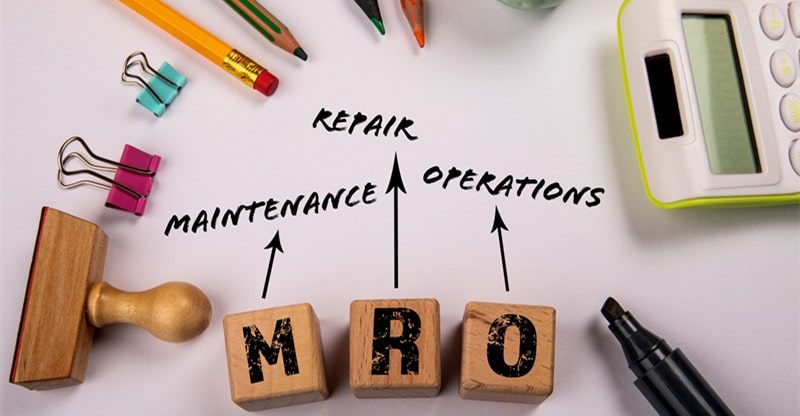How MRO Inventory Management Impacts Your Bottom Line
In the dynamic world of business operations, Maintenance, Repair, and Operations (MRO) inventory often takes a back seat. However, its relevance cannot be overstated. Ensuring that the right parts and supplies are available at the right time can drastically influence a company’s bottom line.
Understanding the Financial Implications of MRO Inventory
At the heart of MRO inventory lie both direct and indirect costs, which together paint the financial landscape of an organization’s maintenance operations. Direct costs primarily revolve around the immediate expenses tied to the acquisition of spare parts, tools, and materials. This could include the cost of procurement, transportation, and initial handling.
Indirect costs, on the other hand, are less visible but equally impactful. These encompass storage expenses, the costs linked with parts obsolescence, and the overheads of managing the inventory, like salaries of inventory management staff and the utilities of the storage facility.
Moreover, there’s the cost of capital to consider – money that’s tied up in inventory isn’t available for other potentially lucrative investments, thus potentially leading to missed opportunities.
In the absence of a meticulous MRO management system, businesses can quickly find themselves grappling with substantial financial risks. Overstocking leads to higher holding costs, while understocking can halt operations. Both scenarios can bleed a company’s finances in different ways, emphasizing the crucial balance that must be struck in MRO inventory management.
This expanded section should provide a more comprehensive understanding of the financial dynamics surrounding MRO inventory.
Benefits of Efficient MRO Inventory Management
The silver lining in this operational aspect is that efficient MRO inventory management can lead to:
Cost Savings: Streamlined MRO inventory ensures optimal stock levels. By striking a balance and avoiding both overstocking and stockouts, companies can allocate funds more efficiently. Regularly reviewing reorder points based on usage trends prevents capital from being unnecessarily locked in idle stock, amplifying overall savings.
Increased Operational Uptime: A well-orchestrated MRO inventory system guarantees immediate access to necessary parts. This accessibility cuts down on waiting times, significantly reducing operational downtimes. In industries where time is of the essence, this can directly translate to improved customer satisfaction and increased revenues.
Optimized Cash Flow: Excess stock represents frozen capital. Efficient inventory management releases this capital, allowing businesses to reinvest it in growth-centric activities or simply improve liquidity. This flexibility is crucial in navigating the challenges of a competitive market.
Enhanced Productivity: When maintenance teams have the parts they need when they need them, there’s a discernible spike in productivity. Minimized downtimes mean projects stay on schedule, boosting morale and ensuring resource utilization is at its peak.
Real-life Consequences of Inefficient MRO Management
In contrast, an inefficient system can lead to:
Unplanned Downtime: Every minute an operation stands still due to lack of parts translates to financial loss. Unexpected halts disrupt the supply chain, compromise deadlines, increase labor costs, and can even lead to contract breaches or penalties.
Wasted Resources: In the absence of accurate inventory data, ordering might be based on guesstimates. This approach can result in unneeded parts gathering dust or manpower being allocated where it’s not needed. Both scenarios draw resources away from critical areas, leading to financial leakage.
Increased Total Cost of Ownership (TCO): An overlooked aspect is how poor inventory management can inflate the lifetime cost of equipment. Without timely maintenance or the right parts, equipment wear and tear accelerates, leading to frequent replacements or expensive overhauls.
The Role of Technology in Boosting Bottom Line through MRO
Modern businesses can leverage technology to make MRO inventory management more efficient:
Inventory Management Software: Advanced software solutions provide real-time insights into inventory status, consumption patterns, and reorder triggers. This digital assistance not only ensures data-driven decision-making but also integrates with other business systems for cohesive operations.
Predictive Maintenance: Leveraging machine learning and AI, predictive maintenance tools analyze patterns to forecast potential breakdowns. This proactive approach allows companies to schedule maintenance during non-peak hours, order parts in advance, and eliminate the costs associated with emergency breakdowns.
Integration with Finance Tools: Synchronizing inventory data with financial analytics tools provides an immediate snapshot of cost implications. This harmony enables teams to grasp the financial impact of their inventory decisions in real-time, fostering a culture of fiscal responsibility.
Tips for Improving MRO Inventory Management
Navigating the intricacies of MRO inventory can be challenging, but with a strategic approach, organizations can optimize their operations and boost their bottom line. Implementing effective techniques ensures a more streamlined process, reduces inefficiencies, and can lead to significant cost savings. Here are some essential tips to enhance your MRO inventory practices:
Regular Audits: Implementing a routine of regular audits is fundamental to MRO inventory management. These audits involve a thorough physical count, verifying inventory levels against recorded data. This meticulous approach ensures that records are accurate, forming the foundation for informed decision-making.
Identifying discrepancies, whether from data entry errors, potential theft, or other issues, ensures a clear understanding of stock status. With an accurate grasp of inventory, businesses can make strategic choices, such as restocking essentials or phasing out underperforming items, optimizing their resource allocation.
Training and Development: The efficiency of an MRO system extends beyond just logistical processes; it is intrinsically linked to the people behind the operations. Prioritizing continuous training and development means that staff, from procurement experts to storage personnel, understand the nuances and importance of their roles within the MRO framework. MRO inventory management often intersects with various business domains, from finance to on-ground operations. Comprehensive training initiatives help staff develop a broad perspective, enabling them to make decisions that align with the company’s broader objectives and financial strategies.
Vendor Relationships: Establishing and nurturing robust relationships with suppliers is invaluable. Close ties with suppliers can lead to benefits such as volume discounts, priority deliveries, and more flexible payment terms.
Moreover, a trusted vendor can offer insights into market trends, suggest new products, or even provide early warnings about potential supply chain disruptions. Cultivating such relationships means businesses can react faster to changing circumstances, ensuring continuity in their operations and minimizing potential negative impacts on the bottom line.
Leverage Technology: In today’s digital era, relying solely on traditional methods can be limiting. Embracing technological solutions designed for inventory management can be a game-changer. Advanced software tools can provide real-time updates, automate reorder processes, and even forecast future demand using historical data. Integrating technology means not only greater accuracy but also an opportunity for predictive analysis.
By anticipating future needs or identifying patterns in equipment failures, organizations can proactively manage their MRO inventory. This foresight can lead to reduced downtimes, improved operational efficiency, and significant cost savings in the long run.
Conclusion
MRO inventory management is more than just a logistical necessity—it’s a significant financial lever. By refining and optimizing MRO practices, businesses can not only ensure smoother operations but also witness a positive impact on their bottom line. As industries evolve, it’s paramount for companies to revisit and upgrade their MRO strategies, making them a cornerstone of their financial strategies.



